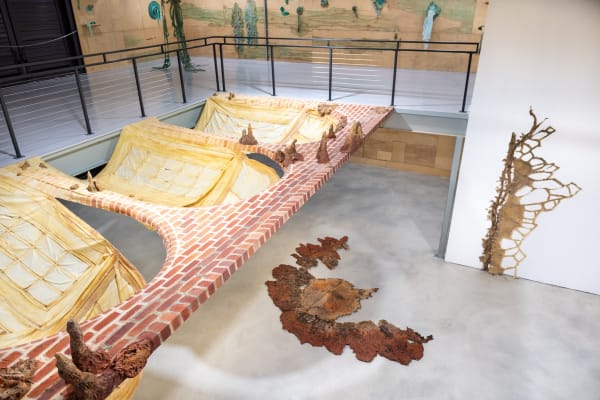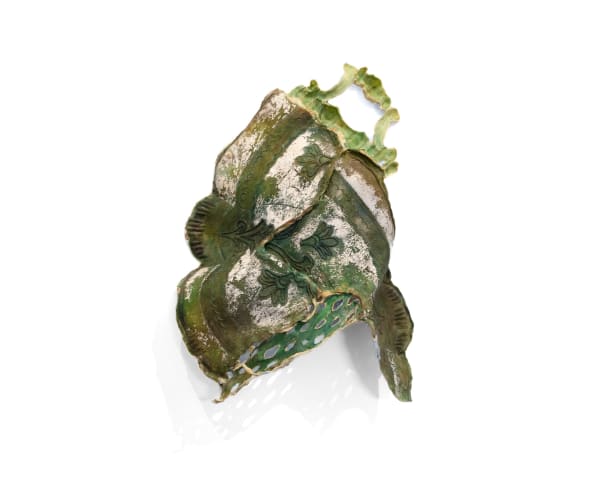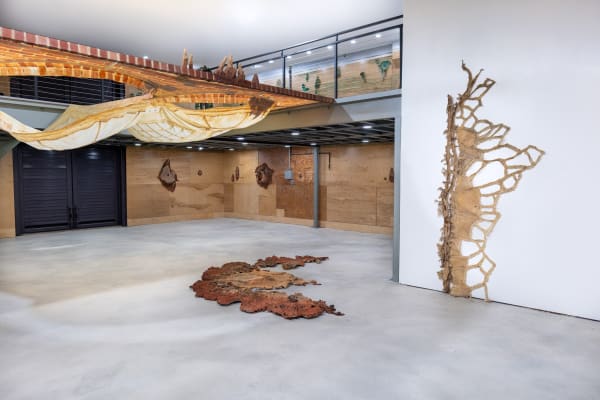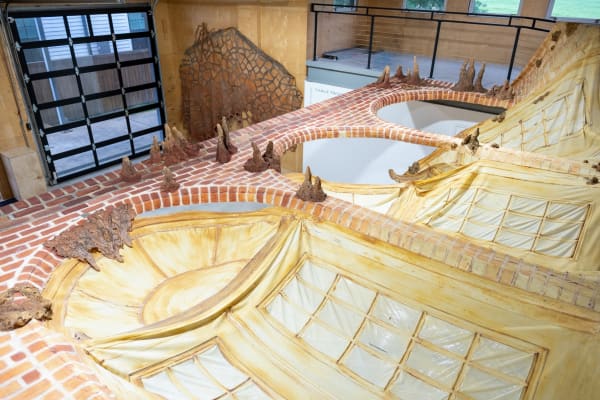Carlie Trosclair: allowed our edges to merge
-
 Carlie Trosclair, Home Relics II, 2024
Carlie Trosclair, Home Relics II, 2024 -
 Carlie Trosclair, Home Relics IX, 2024
Carlie Trosclair, Home Relics IX, 2024 -
 Carlie Trosclair, Home Relics V, 2024
Carlie Trosclair, Home Relics V, 2024 -
 Carlie Trosclair, Confluence, 2024
Carlie Trosclair, Confluence, 2024 -
 Carlie Trosclair, Woodland Terrains, 2022
Carlie Trosclair, Woodland Terrains, 2022 -
 Carlie Trosclair, Understory, 2024
Carlie Trosclair, Understory, 2024 -
 Carlie Trosclair, Home Relics VI, 2024
Carlie Trosclair, Home Relics VI, 2024 -
 Carlie Trosclair, Home Relics IV, 2024
Carlie Trosclair, Home Relics IV, 2024 -
 Carlie Trosclair, Home Relics VIII, 2022
Carlie Trosclair, Home Relics VIII, 2022 -
 Carlie Trosclair, Home Relics XIII, 2024
Carlie Trosclair, Home Relics XIII, 2024 -
 Carlie Trosclair, Home Relics XVI, 2024
Carlie Trosclair, Home Relics XVI, 2024 -
 Carlie Trosclair, Home Relics XIV, 2022
Carlie Trosclair, Home Relics XIV, 2022 -
 Carlie Trosclair, Medallion (Blue), 2021
Carlie Trosclair, Medallion (Blue), 2021 -
 Carlie Trosclair, Home Relics XII, 2024
Carlie Trosclair, Home Relics XII, 2024 -
 Carlie Trosclair, Home Relics X, 2024
Carlie Trosclair, Home Relics X, 2024 -
 Carlie Trosclair, Inheritance, 2024
Carlie Trosclair, Inheritance, 2024 -
 Carlie Trosclair, Home Relics XXII, 2024
Carlie Trosclair, Home Relics XXII, 2024
Sibyl is pleased to present allowed our edges to merge, a solo exhibition of installation and sculpture by New Orleans native and local, Carlie Trosclair.
Trosclair’s practice recontextualizes our understanding of domestic space through the slow and arduous process of casting architectural structures in latex. The resulting ghostlike “skins” allude to the fallibility and vulnerability of home, both as a physical space and a concept. The daughter of a New Orleans electrician, Trosclair recalls spending her childhood in unfinished homes with their inner workings laid bare. These memories go hand in hand with the impacts of a childhood spent on the Gulf Coast, where one grows up on a perpetual schedule of evacuation and uncertain return. This repeated act of leaving home and physical belongings behind led Trosclair to more closely consider the psychology of loss and the haptics of memory.
A “home” is more than the simple structural elements that compose it. Home denotes an emotional and psychological attachment to place. At its best, a home should offer a sense of stability and comfort that is perhaps not entirely possible in a landscape on the perpetual verge of flood and overgrowth. Trosclair investigates these psychological attachments and the ways that architecture can often serve as a proxy for those who live within it, absorbing the impacts of a changed environment, whether they be gradual, instantaneous, or systemic. allowed our edges to merge proposes a dialogue towards imaginative and hopeful futures in which humanity can look to the natural world as its foremost and preeminent teacher and collaborator.
Trosclair recently expanded her practice into casting natural architectures such as craters, tree stumps, and Louisiana cypress knees. The liquid latex, a natural material tapped from rubber trees, finds every crack and crevice of its subject, pulling away an entire layer of physical time; it absorbs specks of dust, bark, plant matter, stones, anything that is not wholly affixed. The resulting cast holds these elements within itself, a measure of one specific place and moment in time on a microscopic level. Trosclair captures a unique and immediate present that can never be replicated. These latex skins read like the physical incarnation of memory, charged with a sense of solastalgia as caused by a rapidly changing landscape, where so often the memory of a space is all that remains. In transposing a solid structure into one that is malleable and translucent, Trosclair upends the viewer’s preconceived notions of stability.
In allowed our edges to merge, sculptures and installations highlight different ecosystems found in the natural world and their relationship to the built environment. Latex casts of cypress knees merge with those of architectural fragments, emerging from a brick wall. Cypress trees thrive in wet environments thanks to their deep root systems, with “knees” that exchange oxygen to stabilize in waterlogged soils. Trosclair casts cypress knees specific to residential suburban communities, noting how the gnarled roots return to sites despite repeated extermination because they blindly remember a time when the area was subaquatic. In casting the roots and meditating on this pattern, Trosclair ruminates on the equilibrium of breath, how inhale leads to exhale, collapse leads to expansion, and on and on.
In her Home Relics series shown on the gallery’s second level, Trosclair fuses latex casts of plant and aquatic life with those from fragments of architecture and household decor. Each wall-mounted latex sculpture evokes a natural growth, such as lichen, mold, or bearded fungi. Splicing these natural and manmade materials creates a cohesive connection alluding to a future across deep time, at which point there will exist no true distinction between such materials as everything is reduced to fossils of a distant, forgotten past. With its confluence of the natural and the domestic, Trosclair’s entire body of work functions as a gentle reminder that even within our delineated domestic boxes, the true “home” is the Earth we all share and too often take for granted.
Carlie Trosclair’s solo exhibition, allowed our edges to merge, will be on view at Sibyl through October 6. The gallery has open public hours on Saturdays and Sundays from 12 - 6 PM, or is otherwise open by appointment.
ABOUT CARLIE TROSCLAIR
Carlie Trosclair (b. New Orleans, LA) is a sculptor and installation artist who records and reimagines the genealogy of home and its relationship to the natural world. As the daughter of an electrician, Trosclair spent her formative years in historic residential properties at varying stages of construction and renovation. Reflectively her work creates new topographies and narratives that highlight structural and decorative shifts evolving over a building's lifespan. Trosclair earned an M.F.A from the Sam Fox School of Design & Visual Arts at Washington University in St. Louis, B.F.A from Loyola University New Orleans, and is an alumni of the Community Arts Training Institute in St. Louis. Select artist residencies include: Bemis Center for Contemporary Arts (NE), Loghaven Artist Residency (TN), Santa Fe Art Institute (NM), Joan Mitchell Center (LA), McColl Center (NC), and Vermont Studio Center. Trosclair’s work has been featured in Art in America, The New York Times, ArtFile Magazine, and Temporary Art Review, among others. She is the recipient of the Riverfront Time‘s Mastermind Award, Regional Arts Commission Artist Fellowship and the Great Rivers Biennial Award. In 2023 Trosclair was named the Ellis-Beauregard Fellow for the Visual Arts and the South Arts Louisiana State Fellow for Visual Arts.
ABOUT SIBYL
Founded by Katherine Lauricella Ainsley in 2022, Sibyl is a contemporary art space in New Orleans dedicated to promoting emerging artists and art practices. Collaborating with artists, patrons, and institutions alike, the gallery aims to continue to diversify and strengthen the New Orleans art community and connect it with the broader international art world.










































